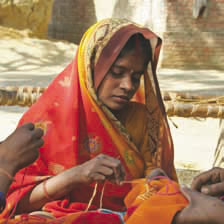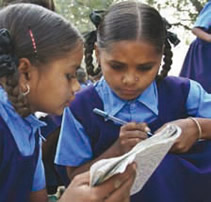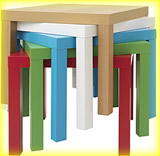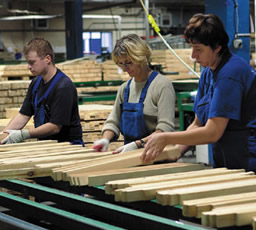Manufacturers within the secondary sector create IKEA products from raw materials. As products
move through the supply chain, the process of
value-added takes place.
Value-added: stages within the
supply chain that add to or change
a product increasing the difference
between the value of the product
and the value of its inputs.
IKEA designs many of its products so that the smallest amount of resources can make the best
products. For example, IKEA saves on resources by using
hollow legs in furniture (e.g. the OGLA
dining chair). Another example is by using a
honeycomb-paper filling material instead of solid
wood for the inside of table tops (e.g. the LACK series).
As manufacturers or suppliers add value to products, the IWAY code of practice
identifies
IKEA’s minimum requirements. The IWAY code of practice expects suppliers to:
• follow national and international laws
• not use child labour
• not use woods and
glues from non-sustainable forests
• reduce their waste and emissions
•
contribute to recycling
• follow health and
safety requirements
• care for the environment
• take care of their employees.
The
application of the code
raises standards. Each of the requirements within the code of
conduct helps to develop sustainable business activities. They have a positive impact on the
business environment in which the suppliers
operate. They also
improve the experience of people
working for those businesses. To
monitor suppliers, IKEA regularly
carries out an IWAY
audit.
This involves talking to employees and
inspecting documents and
records. IKEA visits suppliers
on-site on a number of
occasions to ensure that they are following the code of conduct.

The code of conduct for suppliers and the work with other organisations
underlines IKEA’s
commitment to ‘low price but not at any price’. Although IKEA wants its customers to enjoy
low prices, this should not happen
at the expense of its business principles.
To support sustainable partnerships with suppliers, IKEA works with other organisations. In
2000 IKEA formed a partnership with UNICEF (United Nations International Children’s Emergency Fund) to work on a community programme in
Northern India. The aim of the work was to prevent child labour by raising
awareness and
addressing the
root causes.

IKEA has also formed a partnership with the World Wildlife Fund (WWF). IKEA and WWF have
committed themselves to promoting the sustainable use of natural resources. This helps to
ensure that forests can be used both now and in the future.
For example, IKEA and WWF actions have led to:
• a series of training courses for people in Russia, Bulgaria, Romania and China on
responsible forest management
• the development of
forestry plans in China
• demonstrations to managers in Latvia on the
benefits of responsible forestry.
All these projects show IKEA’s commitment to
supporting sustainable practices.



